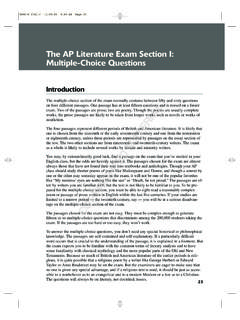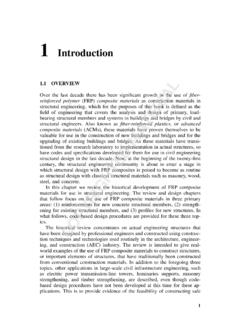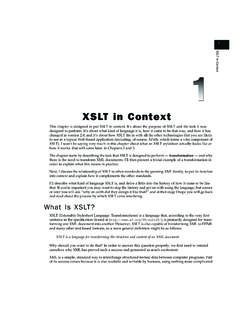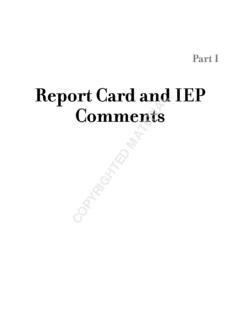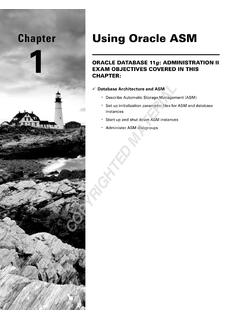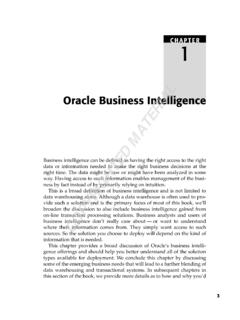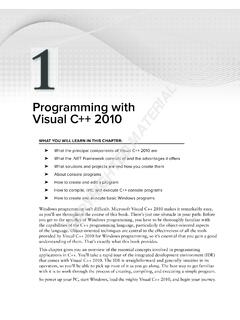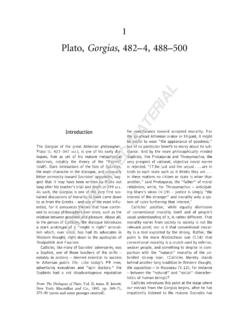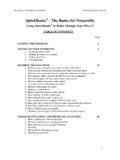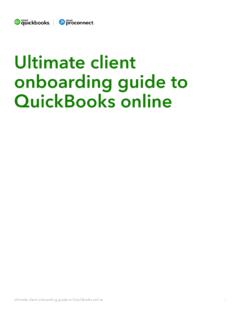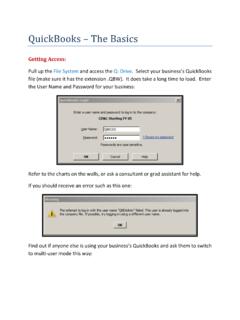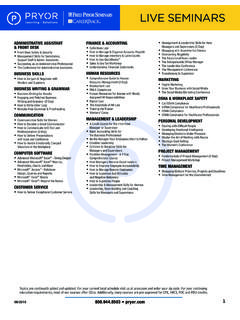Transcription of Chapter 1: Principles of Accounting - Wiley
1 Chapter 1: Principlesof AccountingIn This Chapter Figuring out the purpose of Accounting Reviewing the common financial statements Understanding the philosophy of Accounting Discovering income tax Accounting and reportingAny discussion of how to use quickbooks to better manage your busi-ness begins with a discussion of the basics of Accounting . For thisreason, in this Chapter and the next two chapters, I attempt to provide thesame information that you may receive in an introductory college account-ing course. Of course, I tailor the entire discussion to quickbooks and thesmall business environment. What you ll read about here and in the nextchapters of this book pretty much describes how Accounting works in asmall business setting using you have had some experience with Accounting , if you know how to readan income statement and balance sheet, or if you know how to construct ajournal entry, you don t need to read the discussion provided by this chap-ter or the next.
2 However, if you re new to Accounting and business book-keeping, take the time to carefully read this Chapter . The Chapter starts bygiving a high-level overview of the purpose of Accounting . Then, I review thecommon financial statements that any Accounting system worth its salt pro-duces. I also discuss some of the important Principles of Accounting and thephilosophy of Accounting . Finally, I talk a little bit about income tax law andtax of AccountingIn the movie Creator, Peter O Toole plays an eccentric professor. At one point,O Toole s character attempts to talk a young student into working as anunpaid research assistant. When the student protests, noting that he needs15 credit hours, O Toole creates a special 15-credit independent study named Introduction to the Big Picture. In the next section, I describe the big pic-ture of Accounting , which is really the appropriate place to begin a discus-sion of Accounting .
3 At its very core, Accounting makes perfect, logical 12/22/04 7:25 PM Page 9 COPYRIGHTED MATERIALP urpose of Accounting10 The big pictureThe most important thing that you need to understand about Accounting isthat Accounting provides financial information to stakeholders. Stakeholdersare the people who do business with or interact with a firm; they includemanagers, employees, investors, banks, vendors, government authorities,and agencies who may tax a firm. Each of these stakeholders and their infor-mation requirements deserve a bit more discussion. Why? Because the infor-mation needs of these stakeholders determine what an Accounting systemneeds to , investors, and entrepreneursThe first category of stakeholders is the managers, investors, and entrepre-neurs. This group needs financial information to determine whether a busi-ness is making money.
4 This group also wants any information that givesinsight into whether a business is growing or contracting, and how healthyor sick it is. In order to fulfill its obligations and duties, this group oftenneeds detailed information. For example, a manager or entrepreneur maywant to know which customers are particularly profitable or active investor may want to know which product lines are growing related set of information requirements concerns asset and liability recordkeeping. An assetis something that the firm owns, such as cash, inventory,or equipment. A liabilityis some debt or obligation that the firm owes, suchas bank loans and accounts payable. Obviously, someone at a firm perhaps a manager, bookkeeper, or accountant needs to have very detailed records of the amount of cashthat the firm has in its bank accounts, the inventory that the firm has in itswarehouse or on its shelves, and the equipment that the firm owns and usesin its operations.
5 If you look over the preceding two paragraphs, nothing I ve said is particu-larly surprising regarding the financial information requirements needed bya firm s management. It makes sense, right? Someone who works in a busi-ness, manages a business, or actively invests in a business needs good gen-eral information about the financial affairs of the firm and, in many cases,very detailed information about important assets (such as cash) and liabili-ties (such as bank loans). External creditorsA second category of stakeholders includes outside firms that loan money toa business and credit reporting agencies that supply information to these05_576623 12/22/04 7:25 PM Page 10 Book IChapter 1 Principles ofAccountingPurpose of Accounting11lenders. For example, banks want to know about the financial affairs andfinancial condition of a firm before lending money.
6 The Accounting systemneeds to produce the financial information that a bank requires in order toconsider a loan request. What information do lenders want? Lenders want to know that a business isprofitable and enjoys a positive cash flow. Profits and positive cash flowsallow a business to easily repay debt. In a worst case scenario, a bank orother lender also wants to see assets that can be liquidated to pay a loan and also other debts that may represent a claim on the firm s assets. Vendors also typically require financial information from a firm. A vendoroften loans a firm money by extending trade credit. What s noteworthy aboutthis is that vendors sometimes require special Accounting . For example, oneof the categories of vendors that a company such as Wiley Publishing, with is authors.
7 In order to pay an author the royalty that he or she isentitled to, Wiley needs to put in a fair amount of work to calculate royalty-per-unit amounts and then report and remit these amounts to firms sometimes have similar financial reporting requirements for ven-dors. Franchisees (such as the man or woman who owns and operates thelocal McDonald s) pay a franchise fee based on revenues. Retailers may needto perform special Accounting and reporting in order to enjoy rebates andincentives from the manufacturers of the products that they agenciesPredictable stakeholders requiring financial information from a business arethe federal and state government agencies with jurisdiction over the example, every business in the United States needs to report on its rev-enues, expenses, and profits so that the firm can correctly calculate incometax due to the federal government and then pay that tax.
8 Firms with employees must also report to the federal and state governmenton wages paid to those employees and pay payroll taxes based on met-rics, such as number of employees, wages paid to employees, and unemploy-ment benefits claimed by past this sort of financial information to government agencies representsa key duty of a firm s Accounting form generationIn addition to the financial reporting described in the preceding paragraphs, Accounting systems typically perform one other key task for businesses: pro-ducing business forms. For example, an Accounting system almost always05_576623 12/22/04 7:25 PM Page 11 Reviewing the Common Financial Statements12produces the checks needed to pay vendors. In addition, an accountingsystem also prepares the invoices and payroll checks.
9 More sophisticatedaccounting systems, such as those used by large firms, prepare many otherbusiness forms, including purchase orders, monthly customer statements,credit memos to customers, sales receipts, and so Accounting function that I have described so far is performed ablyby each of the versions of quickbooks : quickbooks , quickbooks Pro, andQuickBooks Premier. Reviewing the Common Financial StatementsWith the background information just provided, I m ready to talk about someof the common financial statements or Accounting reports that an account-ing system like quickbooks produces. If you understand which reports youwant your Accounting system to produce, you should find it much easier tocollect the raw data necessary to prepare these reports. In the following paragraphs, I describe the three principal financial statements:the income statement, the balance sheet, and the statement of cash flows.
10 Ialso briefly describe a fourth, catch-all category of Accounting reports. Don t worry I ll go through this material slowly. You need to understandwhat financial statements and Accounting systems are supposed to provideand what data these financial statements income statementPerhaps the most important financial statement that an Accounting systemproduces is the income statement. The income statement is also known as aprofit and loss statement. An income statement summarizes a firm s rev-enues and expenses for a particular period of time. Revenuesrepresentamounts that a business earns by providing goods and services to its cus-tomers. Expensesrepresent amounts that a firm spends providing thosegoods and services. If a business can provide goods or services to cus-tomers for revenues that exceed its expenses, the firm earns a profit.
